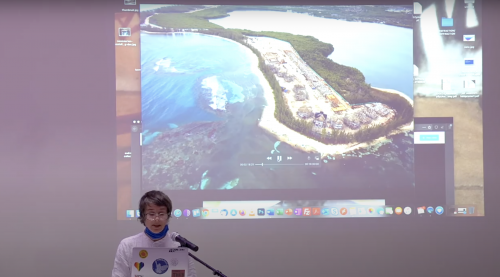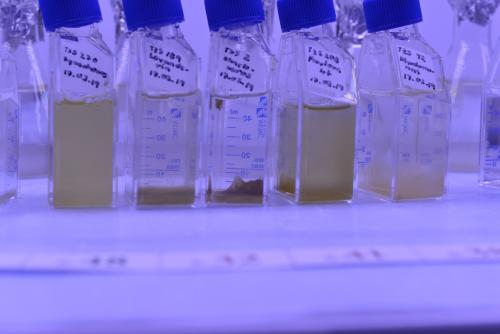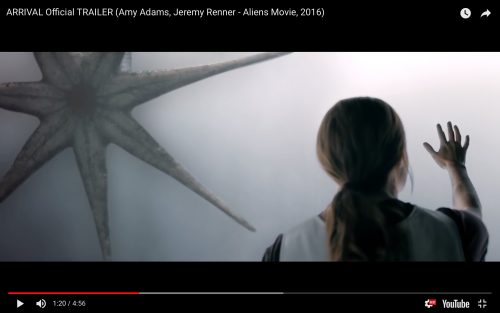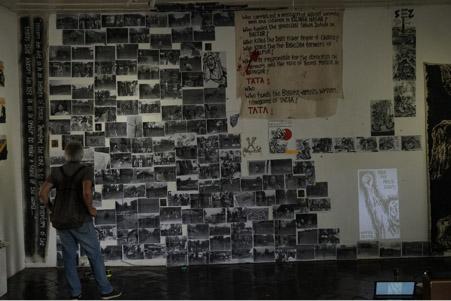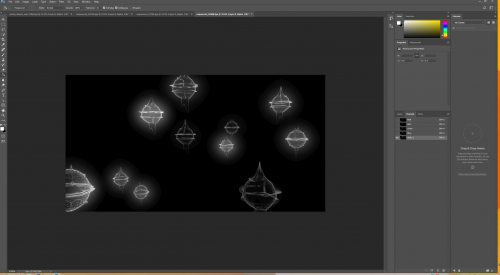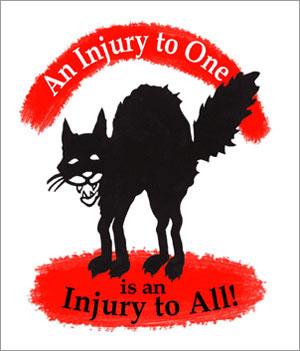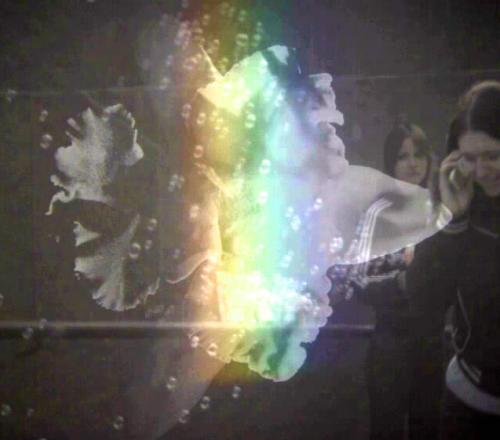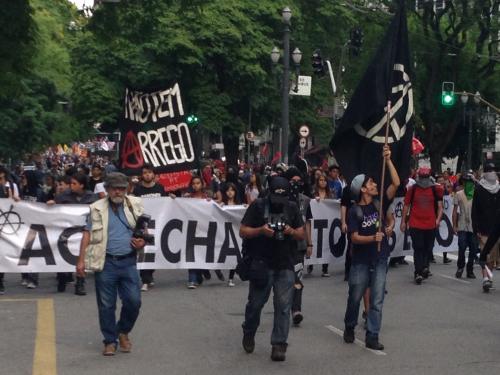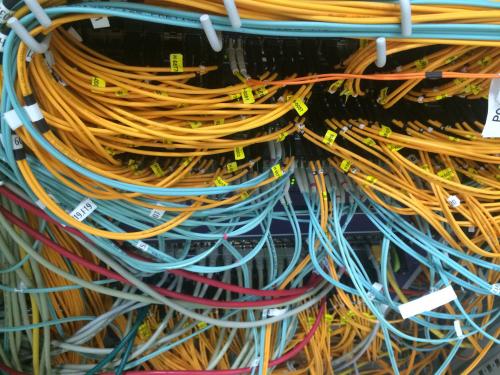SMW: I’m interested in your perspective as an artist and critic, living in New York during W.A.G.E. [1] and other social formations. More specifically, I’m curious about your investigation into the material basis of “the cloud,” as well as the precarious nature of various aspects of modern lyrical life.
You also had a look at the text on transversal feminism “Solidarity and Intersectionality: What Can Transnational Feminist Theory Learn From Regional Feminist Activism” by Suzana Milevska [2] which I want to use as a basis for discussion.
TC: Right. I liked Milevska’s use of “transversal politics,” which doesn’t presuppose a shared identity for consociates, but fosters heterogeneous, solidary links. This is a crucial issue: Who is the “we” that solidarity delineates? In her 1995 essay, “Reflective Solidarity,” Jodi Dean plots its different meanings, from the liberal tradition, where the “we” is established “in a founding moment,” to the classical republican framework, in which “we” signals a “preexisting ethical consensus.”[3] The pronoun’s fixity, in these contexts, lends to an equally rigid notion of “them” – of the oppositions and exclusions that negatively structure the body politic.
Given this, the challenge for contemporary solidarity, Dean notes, is to imagine a “we” that is neither given nor fixed. Rather, it’s constituted through “an ongoing process of engagement and critique,” always remaining aware of “the ever present facts of exclusion.”[4]
By exclusion, I’m not simply talking in terms of identity groups, but epistemologies. According to Sally J. Scholz, political solidarity must acknowledge “differences in social and epistemological privilege,” while creating space for “multiple, overlapping, and at times contradictory knowledge claims.”[5]
Now, developing these theories in contemporary practice is another matter altogether. I can’t speak intimately to the activist context, but movements like Occupy have raised a question about the commensurability of new organizing strategies with those traditionally associated with leftist politics – for instance, through labor unions. As reported by Arjun Gupta, Occupy Wall Street organizers were initially disinclined to involve unions, “because they were seen as bureaucratic and short-sighted.”[6] In retrospect, several union affiliates have noted the benefits of their eventual involvement, in “help[ing] workers win better contracts and bolster[ing] labor reformers.” [7] OWS organizers, on the other hand, don’t seem to have conceded much in this relationship; for example, they made clear that they would not participate in election-related union activity.[8]
This summary doesn’t do the narrative justice. Still, I find it useful, in showing that even stalwart labor institutions recognize the landscape is changing – and, in turn, the meanings of solidarity. And while I’m not sure union labor can or should restructure itself, I’m encouraged that it has the capacity to function within the “weaker” links of heterogeneous solidary groups.
SMW: For sure, one thing is, historical and very precise contexts, like union structures with the heavy load on the organization, but I’m also thinking that maybe the challenge now is more in terms of lower ties: to find something that is not only “empathy,” or not only “friendship,” but also a common awareness of struggle in a transversal sense. That said, transversal sounds a bit intellectual to me. What does it mean in a practice? To find common ground ties like in an artist or in farmers or in a workers practice in different parts of the world. That’s why I thought maybe there’s a way, where this is actually positive that you have to strip down the ideology. Let’s say working on a 3D printed, carved, molded version of singular connections amounting to a “we” in Jodi Dean’s sense of a temporary cluster. Occupy did not create a project of non-solidarity or solidarity, and you saw quite a lot of problems that come with that. So taking what can be learned, we can still make a better molded, better cast version of solidarity for the future. Because we don't have anything better, not as a “realism” (in the way that for example Isabelle Stengers sees capitalist realism [9] but one that resists with imagination (maybe comparable to what David Graeber suggests [10]): it cannot be true that I am on my own in this struggle, or that nobody is interested in how seeds are mass poisoned. But on another level, this is about what people do to share, or how they find expressions, organization and maybe the concrete. Or do we need to find a step before the organization, the concrete, and ask: how do we get people together, and what could the structures be?
TC: The step before the step. The form before the form.
SMW: Yes. This relates to the question of art and, through Guattari’s The Three Ecologies [11]: to becoming. But what I like about the concept of solidarity is that you have some idea of what’s created in an actual sense of personalities – or even bad ideology. But you also know that a lot of this has failed and there are new challenges. We need weapons that have precision, imagination, and sharpness.
TC: Ha, bad ideology! I’m glad you pointed this out, lest we believe that solidarity is reserved for the left. Sadly, the most visible and politically effective solidary groups are pushing right-wing and fundamentalist programs.
And you’re right about the importance of this “becoming,” which is not far from the “ongoing process” I mentioned earlier. Indeed, badness, conflict, and failure are ever-present possibilities on the horizon. To a certain extent, these are the inherent risks of solidarity – of putting individual agency in the service of collective agency. Jodi Dean goes so far as to say that “the permanent risk of disagreement” should provide “a basis for solidarity.”[12] In other words, for a solidary group to be “durable,” as Avery H. Kolers writes, individuals must sometimes go along with what they see as bad, illiberal decisions, for the sake of the collective interest.[13]
In a sense, we can find the origin of “solidarity” in this dynamic: obligatio in solidum, from Roman law, which denotes joint liability for a financial debt, in both pecuniary and moral terms. [14] Obviously, we’re speaking here about a different form of “debt” – one held in common through moral, political and affective ties – and it would be interesting to unpack the double meaning of that word…
SMW: I think that’s an important point. But it’s also important to consider lines of production as that concerns the present and the future in relation to debt: not only political production, but also cultural production. Like, what is the value of this painting if it’s only measured in terms of cash flow? Is there another value, and how do I relate my labor to this other value? What role does this consideration play in my daily life form, in my daily conversations with other people? I also want to think about why we allow ourselves to do certain things – and when do we resist.
As an artist, you feel unruly and uncomfortable upon finding out that yet another curator is commissioning a “high-profile” work with no budget – and, unsurprisingly, the artist is unhappy. (Hollis Frampton has a beautiful letter exchange with a MoMA curator about this.[15])
Once you dare to take a look, you find somebody else encountering similar situations. And in a way, you’re a little bit relieved, because you are not the only one/singularity. On a practical level, it’s similar to people working against chemical fertilizers. I’m not talking about the agency of the “we,” but about building ties on a certain level.
TC: Even beyond the art world, this is a lived reality. Can we speak of sociality apart from, and uninfluenced by, economic competition? I don’t want to wheel out the autonomist theory, so in brief: the art world, like the art worker, exemplifies the post-Fordist imbrications of social and professional activity, thus presenting serious challenges to anyone who wants to move through the world on a rigid, ethical ballast.
When you’re screwed over by a curator, for example, you’re disincentivized from voicing this, because you ultimately have more to lose by protesting. (Furthermore, your interlocutor is likely a cultural competitor, friend or no.) This is a terribly paranoiac way of approaching the world, and before we can even begin speaking about contemporary solidarity, our psychical infrastructure needs repair.
So, what might things look like after reparation? (I use this word in all of its senses.) Could friends acknowledge competition as one of their ties, and that their continued affiliation betrays many logics – including cost-benefit analysis? The difficulty of saying “no,” and how often the “yes” is qualified? How we rationalize the qualifications, compulsions and substitutions in the name of “career advancement”: a cultural handout where a wage should be, a promising contact of uncertain ethics?
SMW: Could you find a term for this? What would be a non-negative definition?
TC: You mean, of friendship not structured by economics and competition?
SMW: Yes. I mean, is there something outside of friendship that can turn again into a working relationship?
TC: Well, first: What is friendship within these entanglements? It’s something else disguising itself as friendship – something unpleasant, something easier to disavow than name.
Second: What position can friendship take relative to these entanglements? As I’ve implied, I think it’s a position of candor. We can’t ignore them; we’ll remain within them for the rest of our professional lives. So as a start, we can avow their existence.
SMW: By candor, do you mean respect?
TC: Honesty. You and I, for example, recognize the affinity we feel towards one another – and that there are many entanglements structuring this affinity. That some of these are designed to alienate us, making us perceive one another as competitors. That others may dispose us to collaborate: perhaps for genuine reasons, perhaps for its perceived professional value, or both.
SMW: Barthes wrote about friendship, and I find his argument problematic, in relation to production: I’m not interested in taking time to hang out or relax or heal, unless that time then reflects back onto production.
You see this in a lot of collective and community work – even in lobbying work in the art world. Certain gallery people hanging out together is part of their success and their „good weather friendship“:Strategy under the skin for future profit.
It is necessary to form these social structures. Maybe they look always Janus-faced: There’s the risk of disgust, but also the possibility of reward, if you find someone in the same struggle you can make something positive out of that shared struggle. We don't need to compete in complaining. Recently, I talked to a colleague and felt so exhausted, because he just complained about his precarious life as an avant-garde philosopher, without a tenure position in a university or academy. I tried to buffer back, to calm him down: hey, wait a second, I’m on your side…But this sort of dynamic is scary.
TC: These certain gallery people may be some type of social configuration, but I wouldn’t call it “community,” or a solidary group…
SMW: Yes, it may be a negative example – a structure we see throughout the art world in general. That’s why we for example with Academy Isotrop were aiming for communities and collectives that offer different examples, like the Situationists. That’s a form of solidarity: they saw themselves in political struggle and they looked at what constituted that struggle. Maybe they were “ineffective” in their time, but this ineffectiveness stays in history as a sparkling thing. The Situationists had tendencies of building structures. What about the gallery structure?
TC: I don’t know. I’m risking conservatism in saying that the moment a social community enters the art market, it assumes a value form. Things aren’t so cut-and-dry.
SMW: Yes, could there be a way of differentiating? When it “enters” the market, then there is something like a surplus that gets instrumentalized on top of that functioning community. It’s not one-to-one. The market value can also get lost, or it can get transferred or super entangled.
I am more interested in what that surplus value is – how it’s achieved in this entanglement. Before you can talk about it, it can be commodified. That's why I try to look into communities that lack an immediate profit, or that don’t treat the system of value around capital as the only and most important one.
Maybe there is a way to connect to histories of farmers and workers unions of different communities in solidarity. Like “emancipation,” which needs to be rethought all the time. Even in communities where you have felt secure – let’s say LGBT or “I cant breathe” communities – you need to constantly emancipate their goals even within the structure again and anew and consider your position with loads of echoes and embodiments through the times… Thinking for example of Simone Weil, Shulamith Firestone, or bell hooks.
TC: I agree. I often have my students read bell hooks’s “In Our Glory: Photography and Black Life.” In it, hooks recalls her childhood memories of the homes of friends and family, populated with vernacular photography of African-American life. These images were significant, she writes, in producing a sphere of representation for a community both objectified within hegemonic image cultures, and lacking any control over those realms. “[S]napshots gave us a way to see ourselves, a sense of how we looked when we were not ‘wearing the mask,’” she writes, “when we were not attempting to perfect the image for a white-supremacist gaze.”[16]
Hooks’s essay takes an interesting turn. Racial desegregation, in her opinion, “led many black people to be less vigilant about the question of representation,” partly accounting for the commodification of blackness in contemporary mass media. Her point, as I understand it, is that achieving representation, in the democratic sense, doesn’t obviate the need to continually struggle in all realms of representation. Now, hooks wrote this essay many years before the Black Lives Matter movement, and I’m curious how she would amend it in the present day. Nonetheless, through her writing, she is making her personal vigilance known.
SMW: That’s why I like the conceptual work of becoming much more than the -isms, or than these marginalized political groups that don’t rethink themselves. Feminism is one of the best examples.
To me, it’s similar to what I sense about solidarity or emancipation: it’s thought of as an old stone, which was kicked a long time ago. I don’t even see its traces here anymore. But what if emancipation needs to be rethought, because there’s something we’re missing if we don't have anything alive to offset the competition.
TC: Then perhaps solidarity is a link between friendship and some other political formation that we’re only learning to articulate…
SMW: I don’t think that’s enough as a description. How do you describe Roman sculpture? It’s not enough to describe it with an -ism. If you think about the ear of a horse, there are so many features to it. How you can describe that degree of naturalism?
TC: When did you start thinking about solidarity in this way? And what drew you to this term?
SMW: I think part of it comes from thinking about empathy (its levels and pitfalls). For example, in my childhood, I wondered why some suffer from certain things, and others don’t. Why was I the only one to put up the finger against nuclear power? (My physics teacher punished me and humiliated me endlessly through the rest of gymnasium for this.) The logic was simple, as the black rain after Chernobyl prevented us from eating berries and mushrooms. We had to keep the horses inside. (Nobody knew that it would not help anyway, hahaha.) So it wasn’t just about my ego, or naïveté, but how was resistance possible, and why?
Simone Weil was a huge hero in my childhood. Why were her thoughts so different from those around her? There is an anecdote where Trotsky and she argue and he calls her stupid and naïve, and she goes on to insist. Where is that energy nurtured from? There are tons of minuses, how can there be a plus? Maybe each minus creates an electrical CRASH, and suddenly there’s a plus. I like to imagine this in relation to natural science: as a physical, chemical or molecular virus. It’s not restricted to humans and we can maybe map these affinities onto other species?
Before questioning how a political organization is structured, I am interested on a singularity level in how we function so differently, and what do we do with difference and diversity, in relation to structural violence. And for this, the frame is an ecology – or even a cosmology.
Tyler Coburn and Susanne M. Winterling developed this conversation from a talk they started on a walk through the Franconian countryside in Summer 2015.
Footnotes
- ^ Working artists and the greater economy is a New York based activist organization focused on establishing a sustainable labor relation between artists and the institutions that contract them.
- ^ Also published on Pandora’s Box.
- ^ Jodi Dean, “Reflective Solidarity”, in Constellations, Vol. 2, No. 1, January 1995, 129.
- ^ Ibid., 129.
- ^ Sally J Scholz, “Political Solidarity and the More-Than-Human World”, in Ethics and the Environment, Vol. 18, No. 2, Fall 2013, 81.
- ^ Gupta Arjun, “What Occupy Taught the Unions”, in Salon.com, February 2, 2012, last accessed December 14, 2015. Read more
- ^ Ibid.
- ^ Peter Wallsten, “Occupy Wall Street and Labor Movement Forming Uneasy Alliance”, in The Washington Post, October 20, 2011, last accessed December 14, 2015. Read more
- ^ View Pdf
- ^ Dead zones of the imagination: On violence, bureaucracy, and interpretive labor. The 2006 Malinowski Memorial Lecture. Read more
- ^ Extending the definition of ecology to encompass social relations and human subjectivity as well as environmental concerns, The Three Ecologies argues that the ecological crises that threaten our planet are the direct result of the expansion of a new form of capitalism and that a new ecosophical approach must be found which respects the differences between all living systems. Felix Guattari Bloomsbury Publishing Plc, 24 Apr 2014.
- ^ Dean, 133.
- ^ Avery H Kolers, “Dynamics of Solidarity*”, in Journal of Political Philosophy, Vol. 20, No. 4, Decmeber 2012, first published online March 2011, 365–383.
- ^ Max Pensky, The Ends of Solidarity: Discourse Theory in Ethics and Politics, Albany: State University of New York Press, 2008, 6.
- ^ View Pdf
- ^ Bell hooks, “In Our Glory: Photography and Black Life”, in Art on My Mind: Visual Politics, New York: New Press, 1995, 62.
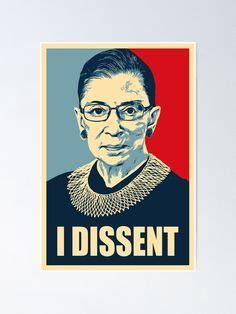


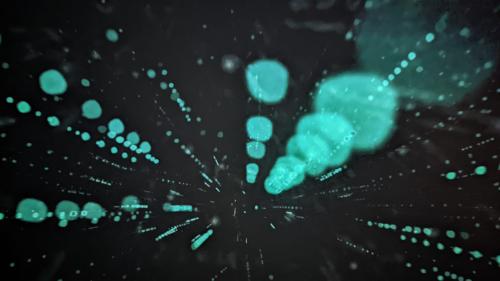

![Blackwash [working title]](/sites/default/files/styles/medium/public/56fe8ebf-7f16-4486-a251-6d85b1e906c3_4_5005_c.jpeg?itok=rIFeYRMo)
